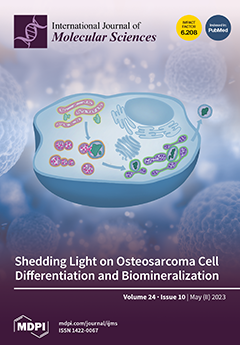Several pieces of evidence point to an allergic component as a trigger of acute appendicitis. As the Th2 immune response is characterized by eosinophil mobilization to the target organ and release of their cationic granule proteins, it is reasonable to investigate if the degranulation of eosinophils could be associated with the local injury. The primary aim of this study is to evaluate the participation of eosinophils granules proteins in acute appendicitis, both at local and systemic levels and the secondary aim is to evaluate the diagnostic accuracy of eosinophils granules proteins for the detection of acute appendicitis, as well as for distinguishing between complicated and uncomplicated acute appendicitis. Eosinophil-derived neurotoxin (EDN), eosinophil cationic protein (ECP) and eosinophil peroxidase (EP) are the most well-known eosinophil granule proteins. From August 2021 to April 2022, we present a prospective single-center study to evaluate the EDN, ECP, and EP concentrations simultaneously in appendicular lavage fluid (ALF) and the serum of 22 patients with acute phlegmonous appendicitis (APA), 24 with acute gangrenous appendicitis (AGA), and 14 normal controls. Concerning EDN, no differences were found between groups. ECP concentrations in ALF and serum were significantly higher in the histologically confirmed acute appendicitis compared to the control groups (
p < 0.0001 and
p < 0.0001, respectively). In ALF, no differences were found between ECP levels in APA: 38.85 ng/mL (IQR 26.50–51.77) and AGA 51.55 ng/mL (IQR 39.55–70.09) groups (
p = 0.176). In the serum, no difference was found between ECP levels at APA: 39 ng/mL (IQR 21.30–56.90) and AGA: 51.30 ng/mL (IQR 20.25–62.59) (
p = 0.100). For EP, the concentrations in ALF (
p < 0.001) and serum (
p < 0.001) were both higher in acute appendicitis compared to the control. In ALF, no difference was found between APA: 240.28 ng/mL (IQR 191.2–341.3) and AGA: 302.5 (IQR 227.7–535.85) (
p = 0.236). In the serum, no differences were found between APA: 158.4 ng/mL (IQR 111.09–222.1) and AGA: 235.27 (IQR 192.33–262.51) (
p = 0.179). Globally, the ALF concentrations were higher than serum concentrations, reflecting an intense inflammatory local reaction in AA. The optimal ECP cut-off for discriminating between acute appendicitis and the controls was >11.41 ng/mL, with a sensitivity of 93.5%, but with a specificity for identifying appendicitis of 21.4%, good discriminative power (AUC = 0.880). For EP, the optimal cut-off was >93.20 ng/mL, with a sensitivity of 87%, but with a specificity of 14.3% (AUC = 0.901), excellent discriminative power. For the diagnosis of perforated AA, the discriminative power of ECP and EP serum concentrations are weak (AUC = 0.562 and AUC = 0.664, respectively). Concerning the presence of peritonitis, the discriminative power of ECP and EP serum concentrations is acceptable, respectively: AUC = 0.724 and AUC = 0.735. Serum levels of EDN (
p = 0.119), ECP (
p = 0.586) and EP (
p = 0.08) in complicated appendicitis were similar to uncomplicated appendicitis. Serum concentrations of ECP and EP can be added to decision-making AA diagnosis. A Th2-type immune response is present in AA. These data bring forward the role of an allergic reaction in the pathogenesis of acute appendicitis.
Full article






